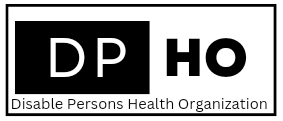
A Holistic Approach
For many, pain is not a transient ache but a chronic companion. This persistent discomfort can arise from the disability itself, secondary conditions, or even the adaptive behaviors adopted to cope with limitations.
Diverse Therapeutic Modalities for Relief
A spectrum of interventions offers avenues for alleviating pain. These include:
- Pharmacological Solutions: Carefully managed medications, from over-the-counter analgesics to prescribed pain relievers, can be crucial for mitigating severe pain.
- Physical and Occupational Therapy: Tailored exercises, stretching, and adaptive techniques can improve mobility, strengthen supporting muscles, and reduce strain, thereby diminishing pain. Occupational therapists also help individuals modify tasks and environments to minimize pain during daily activities.
- Complementary and Alternative Therapies: Approaches like acupuncture, massage, mindfulness, and yoga can offer significant pain relief and improved coping mechanisms for some individuals.
- Psychological Support: Cognitive Behavioral Therapy (CBT) and other counseling methods equip individuals with strategies to reframe their perception of pain, manage associated distress, and improve overall well-being. Addressing the mental health aspects of living with chronic pain is paramount.
- Assistive Devices: Utilizing appropriate mobility aids, ergonomic equipment, and custom seating can significantly reduce physical strain and prevent pain exacerbation.
Expert Insights and Personalized Strategies
Leading experts in rehabilitation medicine emphasize the necessity of a person-centered approach.
Empowerment Through Actionable Advice
Individuals living with disabilities can actively participate in their pain management journey:
- Advocate for Your Needs: Clearly communicate pain levels, triggers, and the impact on daily life to healthcare providers.
- Embrace Self-Management Techniques: Learn and practice relaxation techniques, pacing activities, and maintaining a pain diary to identify patterns.
- Explore Support Networks: Connect with others facing similar challenges.
- Prioritize Lifestyle Factors: Adequate sleep, nutritious diet, and stress reduction are foundational for overall well-being and can significantly influence pain perception.
Policy and Progress
From a policy perspective, there’s a growing recognition of the need for equitable access to comprehensive pain management services for disabled populations.
Mastering Discomfort: Advanced Pain Management for Individuals with Disabilities
Living with a disability often presents unique and profound challenges, not least among them the pervasive burden of pain. This isn’t merely discomfort; for many, it’s a chronic, debilitating force that can severely diminish quality of life and hinder participation in daily activities.
Effective pain management for disabled persons is not a luxury, but a fundamental human right and a cornerstone of holistic well-being, demanding a comprehensive, individualized approach that integrates diverse therapeutic modalities.
Unpacking the Nuances of Disablement Pain
Deep Dive into Keywords: The conversation around pain management for disabled individuals requires exploring a rich lexicon. Chronic pain disability, adaptive pain techniques, disability pain relief, neuropathic pain disability, musculoskeletal pain in disabled, holistic pain interventions, rehabilitation for chronic pain, assistive devices for pain, psychological pain coping, non-pharmacological pain strategies, and integrative pain care.
Pain in the context of disability is often exacerbated by factors such as immobility, muscle spasticity, pressure sores, secondary conditions, and even the psychological toll of living with a long-term impairment.
Comprehensive Approaches to Alleviating Pain
A truly effective pain management program for people with disabilities must be person-centered, considering the individual’s specific condition, functional limitations, and personal preferences.
- Pharmacological Interventions: While medications like NSAIDs, neuropathic agents, and in some cases, judiciously managed opioids, play a role in disability pain relief, they are typically part of a broader strategy. Proper medication management for chronic pain in disabled individuals requires careful monitoring for side effects, drug interactions, and potential dependence.
Physical Therapy & Occupational Therapy: These allied health disciplines are foundational. Physical therapy for pain relief in disabled focuses on improving strength, flexibility, mobility, and posture, often incorporating techniques like therapeutic exercise, manual therapy, hydrotherapy, and modalities such as heat, cold, and electrical stimulation (e.g., TENS). Meanwhile, occupational therapy for pain management in disabled helps individuals adapt their daily activities and environments to minimize pain and maximize independence. This might involve recommending adaptive equipment for pain or teaching energy conservation techniques.
- Psychological and Behavioral Therapies: The mind-body connection is undeniable in pain perception. “Learning to observe pain without judgment and developing acceptance can empower individuals to regain a sense of control,” shares a leading pain psychologist.
- Complementary and Alternative Therapies: Many disabled individuals find significant relief through approaches like acupuncture, massage therapy, yoga, Tai Chi, and even balneotherapy. These alternative therapies for pain in disability should be explored as part of an integrative pain care plan, always in consultation with healthcare providers to ensure safety and efficacy.
- Assistive Technologies: Beyond traditional aids, innovative pain treatments for disabled are emerging. Spinal cord stimulation and peripheral nerve stimulation offer advanced solutions for intractable pain, modulating nerve signals to reduce discomfort. Specialized seating systems and orthotics can prevent pressure points and support proper alignment, thereby mitigating pain.
Policy, Personal Narratives, and Practical Steps
Elaborate on Policy: Healthcare policies must evolve to support comprehensive pain care for disabled populations. This includes ensuring equitable access to specialized pain clinics, subsidizing assistive technologies, promoting interdisciplinary care models, and funding research into disability-specific pain mechanisms. Policies should advocate for training healthcare professionals in inclusive pain assessment and management techniques.
Personal Stories/Anecdotes: My friend, Sarah, who lives with multiple sclerosis, once shared how her chronic neuropathic pain was debilitating. It wasn’t until she found a multidisciplinary pain clinic that combined targeted medication with regular aquatic therapy and mindfulness practices that she experienced significant relief. Her journey underscores the power of a personalized, holistic approach.
Actionable Advice: For individuals with disabilities experiencing pain:
- Advocate for Yourself: Be persistent in seeking comprehensive assessments and clearly articulate your pain experience to healthcare providers.
- Explore Multimodal Options: Don’t rely on a single solution. Discuss a combination of pharmacological, physical, and psychological therapies.
- Embrace Adaptive Strategies: Work with occupational therapists to modify tasks and environments to reduce pain.
- Prioritize Mental Well-being: Engage in stress-reduction techniques and seek support for the emotional toll of chronic pain.
- Stay Active (within limits): Gentle movement, as advised by a physical therapist, can often reduce stiffness and improve overall function.
Unpacking the Nuances of Pain in Disability
Pain in disabled individuals is a multifaceted phenomenon. It can stem directly from the underlying condition (e.g., neuropathic pain in spinal cord injury, musculoskeletal pain from cerebral palsy), or be a secondary consequence of adapted movement patterns, assistive device use, or prolonged immobility. For instance, Dr. Eleanor S. Smith, a leading researcher in rehabilitation medicine, notes, “Individuals with mobility impairments often experience overuse injuries in compensatory limbs, leading to chronic localized pain that can be easily overlooked.” Understanding the Complexities of Pain in Disability
Pain experienced by disabled individuals is an intricate, multifaceted phenomenon, far exceeding a singular symptom. It frequently originates directly from their primary underlying health conditions, such as debilitating neuropathic pain prevalent in spinal cord injury or chronic musculoskeletal pain often associated with conditions like cerebral palsy. However, pain can also manifest as a secondary consequence—a direct result of adapted movement patterns, reliance on essential assistive devices, or prolonged immobility, which can lead to new, distinct sources of discomfort.
For instance, as renowned expert Dr. Eleanor S. Smith, a leading researcher in rehabilitation medicine, highlights, “individuals with mobility impairments frequently contend with overuse injuries in compensatory limbs, leading to persistent, localized chronic pain that is regrettably often under-recognized.” This pain recognition challenge is compounded by pervasive communication barriers. For those navigating cognitive or communication disabilities, articulating their suffering proves immensely difficult, leading to systemic under-assessment and, consequently, severe undertreatment of pain.
My own volunteer work at a local rehabilitation center in Hafizabad vividly underscored this critical reality. I observed a young man with severe cerebral palsy struggling profoundly to convey his persistent back pain until a highly trained therapist, utilizing deep empathy and expert observation, meticulously identified subtle behavioral cues, unlocking the path to pain relief.
This widespread under-recognition not only profoundly compromises the quality of life for people with disabilities but also points to critical gaps in current healthcare policy regarding accessible pain assessment and effective therapeutic interventions. To decisively improve outcomes and ensure equitable pain management, healthcare professionals must adopt comprehensive, multi-modal pain assessment strategies, integrating behavioral observation, meticulous physical examination, and crucial caregiver input. It is imperative that we move beyond superficial examinations to truly grasp the nuanced experience of pain within the disability community, ensuring more compassionate and effective care.
A Semantic Tapestry of Intervention: Beyond the Conventional
Effective pain relief for disabled individuals necessitates a paradigm shift from a purely biomedical model to a truly biopsychosocial framework. This means exploring a rich spectrum of adaptive pain solutions and disability pain control methods, moving beyond sole reliance on medication to embrace integrated, person-centered strategies.
Deep Dive into Integrated Strategies:
- Pharmacological Pathways: Targeted Relief, Prudent Application: While not a standalone solution, judicious use of analgesics, anti-inflammatories, and other pain medications for disabled persons can significantly alleviate symptoms. However, due to potential polypharmacy, altered metabolism, and heightened sensitivity, prescribing requires meticulous attention. Experts emphasize the critical need for individualized dosing and careful monitoring for side effects, especially concerning opioids, where the risk of dependence must be balanced against genuine need for pain palliation. A systematic review published in Pain Therapy (2023) underscored the concerning trend of under-recognition and likely undertreatment of pain with analgesics in adults with intellectual disabilities, highlighting a significant health disparity.
- Non-Pharmacological Powerhouses: Embracing Movement and Mind: These approaches form the bedrock of sustainable chronic pain management for disability.
- Physical Therapy (PT) and Occupational Therapy (OT): These disciplines are indispensable. OT empowers individuals with adaptive techniques and assistive technologies for pain relief, such as custom seating, braces, or ergonomic modifications to daily living aids. As one physical therapist shared, “Often, simply optimizing wheelchair posture can drastically reduce back and shoulder pain in our clients.”
- Complementary Therapies: Techniques like acupuncture, massage therapy, chiropractic adjustments, and osteopathy can offer significant reprieve for many.
- Mind-Body Connection: Psychological Interventions: The intricate link between pain and mental health is undeniable. Cognitive Behavioral Therapy (CBT) for pain, mindfulness, relaxation techniques (e.g., guided imagery, deep breathing), and psychotherapy help individuals reframe their relationship with pain, develop coping mechanisms, and reduce the psychological distress that often exacerbates physical discomfort. “Pain catastrophizing,” a key LSI keyword, refers to exaggerated negative thoughts about pain, and psychological interventions directly address this, promoting resilience and self-efficacy.
- Assistive Technologies: Enabling Autonomy and Comfort: Innovations in adaptive devices for pain relief are transforming lives. This ranges from simple tools like specialized cushions and ergonomic grips to advanced solutions such as Transcutaneous Electrical Nerve Stimulation (TENS) units, or even sophisticated robotic aids that assist with movement and reduce physical strain.
- Lifestyle Adjustments: The Foundation of Well-being:
- Nutrition: An anti-inflammatory diet rich in omega-3 fatty acids and antioxidants can play a pivotal role in reducing systemic inflammation, a common contributor to chronic pain.
- Sleep Hygiene: Adequate, restorative sleep is paramount.
- Pacing and Activity Management: Learning to balance activity with rest, avoiding overexertion during “good days,” is crucial for preventing pain flare-ups and fostering sustainable engagement. This is a core tenet of disability rehabilitation for pain control.
Policy and Advocacy: Ensuring Equitable Access
Despite the breadth of available interventions, significant policy gaps persist. Advocacy is essential to:
- Expand insurance coverage for a full spectrum of non-pharmacological therapies, removing financial barriers.
- Invest in research specifically tailored to pain in diverse disability populations, including those with intellectual and developmental disabilities.
- Enhance healthcare professional training in effective pain assessment and management for individuals with complex communication needs.
- Promote interdisciplinary care models, ensuring seamless collaboration among physicians, therapists, psychologists, and social workers.
Actionable Advice for a Pain-Free Path:
- Be Your Own Advocate (or Find One): Clearly articulate your pain experience to healthcare providers. Utilize pain scales, keep a pain journal, and describe how pain impacts your daily life.
- Seek a Multidisciplinary Team: Demand an integrated approach. Your pain management team should include specialists across various disciplines.
- Explore All Avenues: Don’t limit yourself to medication. Actively investigate physical therapy, psychological support, and complementary therapies.
- Embrace Assistive Technology: Research and trial devices that can reduce strain and promote comfort.
- Prioritize Self-Care: Incorporate healthy lifestyle choices – nutrition, sleep, and mindful movement – into your daily routine.
Transitioning from passive suffering to active pain management is a journey of empowerment.
Here are 10 Frequently Asked Questions (FAQs) regarding Pain Management for Individuals with Disabilities:
- Q1: What are the primary causes of pain in individuals with disabilities?
- A: Pain can stem directly from the underlying condition (e.g., neuropathic pain from spinal cord injury), or be a secondary consequence of adapted movement patterns, prolonged immobility, or overuse injuries from assistive devices, leading to musculoskeletal or chronic localized pain.
- Q2: Why is pain often under-recognized or undertreated in people with disabilities?
- A: Communication barriers, particularly for those with cognitive or communication disabilities, often make it challenging for individuals to articulate their pain accurately, leading to under-assessment by healthcare professionals and subsequent undertreatment.
- Q3: What types of pain are commonly experienced by individuals with disabilities?
- A: Common types include neuropathic pain (nerve damage), musculoskeletal pain (muscle, bone, joint issues), chronic localized pain (often from overuse or compensatory movements), and secondary pain related to pressure sores or spasticity.
- Q4: How can pain be effectively assessed in someone with communication difficulties?
- A: Effective assessment requires a multi-modal approach. This includes observing subtle behavioral cues (e.g., grimacing, guarding, changes in activity, sleep, or appetite), gathering input from caregivers who know the individual best, and using visual pain scales or adapted communication tools.
- Q5: What role do caregivers play in the pain management of disabled individuals?
- A: Caregivers are crucial. They often serve as vital interpreters of pain, noticing subtle changes in behavior or routine. Their input is essential for accurate assessment, consistent medication administration, and implementing daily comfort strategies.
- Q6: Are pain management strategies different for various types of disabilities?
- A: While core principles apply, effective pain management is highly individualized. It considers the specific disability, its associated pain types, the individual’s communication abilities, and their overall health status. A tailored plan is always best.
- Q7: What is the importance of a multidisciplinary approach to pain management?
- A: A multidisciplinary team (e.g., doctors, physical therapists, occupational therapists, speech-language pathologists, psychologists) provides comprehensive care. This ensures all facets of pain—physical, emotional, and functional—are addressed for a holistic and effective management plan.
- Q8: How can individuals with disabilities or their advocates empower themselves for better pain relief?
- A: Self-advocacy involves clearly communicating pain when possible, asking for specific pain assessment tools, seeking second opinions, educating healthcare providers about their unique needs, and documenting pain experiences to share with their care team.
- Q9: What are the long-term consequences of unmanaged chronic pain in disabled individuals?
- A: Unmanaged chronic pain can significantly diminish quality of life, leading to decreased mobility, sleep disturbances, increased anxiety and depression, social isolation, and reduced participation in daily activities and rehabilitation efforts.
- Q10: Are there policy gaps or areas for improvement in pain management for this population?
- A: Yes, there are significant policy gaps. These include the need for increased funding for research into disability-specific pain, mandatory training for healthcare professionals on comprehensive pain assessment for diverse communication needs, and improved access to specialized pain clinics and therapies for disabled individuals.



